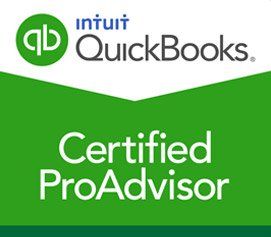Preventing IRS Underpayment Penalties
Our tax structure is considered a "pay-as-you-earn" system by congress. As a result, the federal government has established various programs to assist citizens in achieving the "pay as you earn" obligation. These are some examples:
- Withholdings from employees' paychecks.
- Retirees' pensions are subject to withholding; and
- Calculated tax payments for self-employed persons or with additional income sources that are not subject to withholding.
To avoid the underpayment penalty, taxpayers must prepay a
safe harbor [minimum]. There is a greater nondeductible interest penalty than a bank might charge. Since the penalty is calculated every quarter, making an anticipated payment for the fourth quarter will only lessen the penalty for that quarter.
How does this change by quarter?
While this is the case, withholding is viewed as paid in installments over the year; thus, boosting withholding at the year's end can lower penalties for earlier quarters. Taking an unqualified distribution from a pension plan and then repaying the gross amount within the 60-day statutory rollover restriction might accomplish this goal (but consult this office before utilizing the latter strategy).
If you stick to the regulations, you won't be fined by the law in most states and federal jurisdictions. Two federal safe harbor levels apply when payments are received evenly throughout the year. This year's tax liability is your first and only safety net. You can avoid the penalty if your payments equal to or exceed 90% of your tax due for the current year.
Taxpayers typically rely on the second safe harbor, which is based on your tax from the year prior. Even though you owe a lot of money in taxes this year, you can avoid a penalty if your current year's payments equal or exceed the amount of your prior year's tax. Your current year's tax payments must be at least 110 percent of the previous year's tax if your prior year's adjusted gross income was more than $150,000 (or $75,000 if you file as a married couple).
Difficulty ensues when a taxpayer's income or tax withholding decreases from one year to the next. When financial investments are cashed in, for example, the increase in income is substantial, but there is no matching withholding or projected payments.
Pension and Social Security income are frequently replaced by payroll income without the required withholdings when a taxpayer retires. Unaware taxpayers sometimes find themselves with considerable underpayments and the underpayment penalty at tax time when they fail to recognize these sorts of conditions. (In order to avoid this, we highly recommend setting up a free one hour YokeTax consultation)
There is no other way to ensure your current year's tax bill will be accurate because it is based on the previous year's tax (a known amount). In contrast, 90 percent of the current year's tax bill is dependent on your income for the current year, which isn't always known until it is too late to adjust your current year's prepayments.
To put it another way
There are occasions when it doesn't make financial sense to use the safe harbor method. Let's imagine, for example, that in the prior year, you received a large one-time income payout that raised your tax liability to $25,000, or $10,000 more than you typically pay. You're aware that you won't be able to afford that extra spending money this year. The alternative to prepaying $10,000 more so than your current year's tax under the 100%/110 percent safe harbor is to use the 90% current-year tax safe harbor, which is calculated by forecasting your current year's tax and tracking your income and tax paid throughout the year to ensure that you meet the 90% goal.
If your tax bill is higher than expected, you may be charged an underpayment penalty. The penalty might be imposed on taxpayers who owe the government $1,000 or more. The double whammy can be avoided, but there are several methods to do it.
Waiver of 80%
According to the IRS, taxpayers who paid at least 80% of their 2018 tax bill can avoid the underpayment penalty this year. To avoid the penalty, taxpayers must typically pay at least 90% of their tax obligation for the current year.
This new relief is welcome news after the IRS lowered the threshold to 85 percent in mid-January. Congressional and accountants' groups have been pushing the IRS to provide more waivers. Farm and fishing businesses were already exempt from underpayment penalties for 2018 if they filed and paid their taxes by April 15 before the IRS announced the 80 percent reduction.
Eric Bronnenkant, tax director at Betterment for Business, said that IRS assistance was offered "in appreciation of complexity for the 2018 tax year," acknowledging that many taxpayers didn't completely comprehend how the law changes may influence their bills.
Installment Method
Is there anything you can do about this? Make sure your pencil is razor-sharp! In the United States, the tax system is "pay as you go," which means that you must pay taxes on your income as it is received. Underpayment penalties might be reduced using the annualized approach if your wages and other taxable income are unevenly distributed.
A Comparison to The Previous Year's Tab
Whether you don't qualify for the 80 percent exemption, you should review your previous year's tax return to see if you made any mistakes. Did you pay less or the same amount of tax in 2017 as in 2018, including withholding and anticipated tax? To avoid the underpayment penalty for 2018, you must have paid at least 100% of the preceding year's tax bill for 2018 (or at least 110% of your adjusted gross income is $150,000 or more).
If you notice a significant increase in income, please notify a
Yoketax professional
immediately so that withholding or anticipated tax payments can be adjusted to avoid a penalty.




